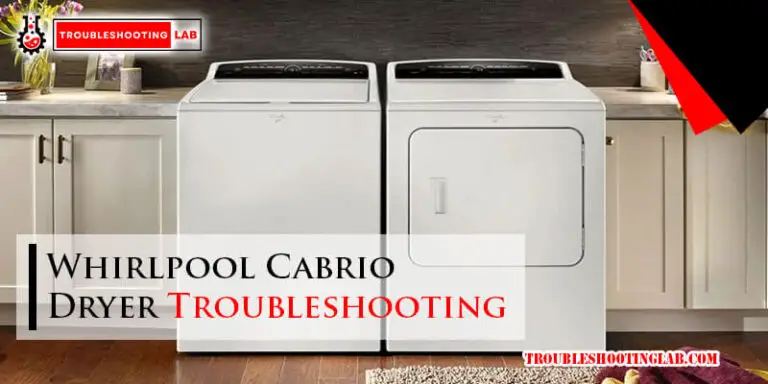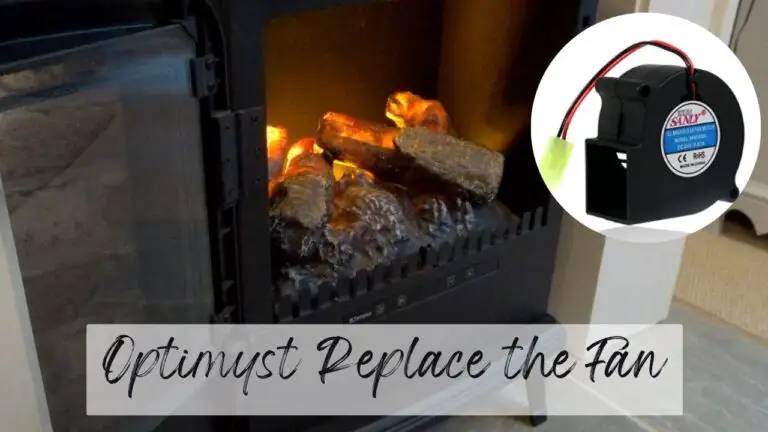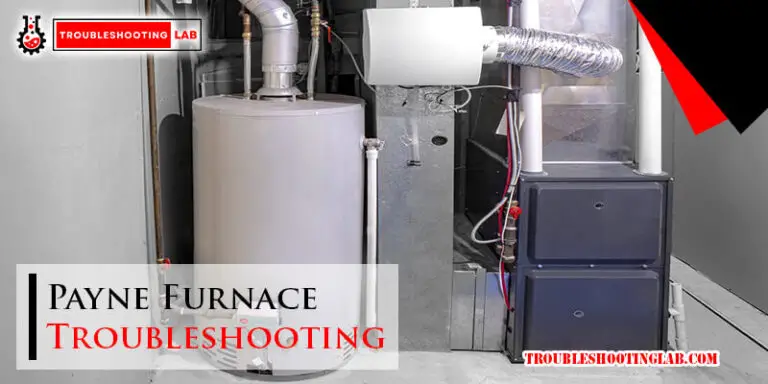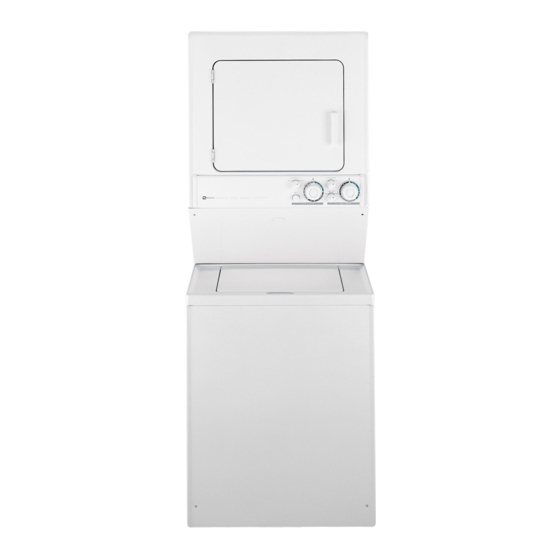Suburban RV Water Heater Troubleshooting: Fixing Heater Issues
If your suburban RV water heater is not getting hot, check if your tanks have enough propane and if the service valve is completely open. If the issue persists, it may be due to a faulty gas valve (solenoid) or ignitor, a dirty burn chamber, or a flame problem.
To resolve these obstacles, it is recommended to seek the assistance of an RV technician. Facing issues with your suburban RV water heater? If it’s not heating up as expected, there are several troubleshooting steps you can take to identify and resolve the problem.
By following these steps, you can potentially avoid costly repairs and ensure your RV water heater is working efficiently. We will walk you through the common issues and their solutions when troubleshooting a suburban RV water heater. So, let’s dive in and get your water heater back up and running in no time!
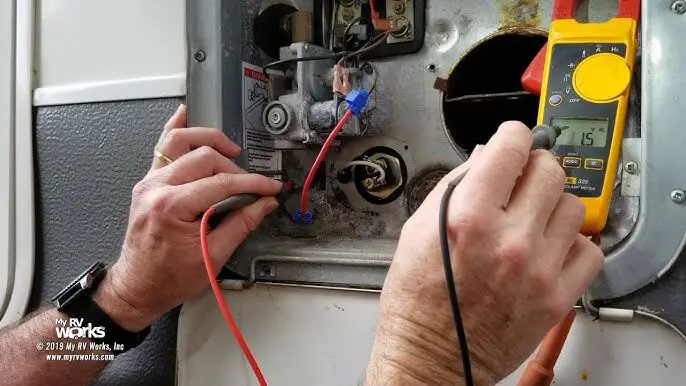
Common Suburban Rv Water Heater Problems
Having a properly functioning water heater is essential for a comfortable RV experience. However, like any other appliance, suburban RV water heaters can encounter various issues that may disrupt your hot water supply. In this section, we will outline some of the most common problems RV owners face with suburban water heaters and provide troubleshooting tips to help you resolve them.
Inadequate Hot Water Supply
If you find that your RV is not providing enough hot water, several factors could be causing the problem:
- Insufficient propane supply: Check that your propane tank is not empty and the service valve is fully open.
- Malfunctioning thermostat: Ensure that the thermostat is set to a suitable temperature and functioning correctly.
- Sediment buildup: Over time, mineral deposits can accumulate in the water heater tank, reducing its efficiency. Consider performing a thorough tank flush to remove any sediment.
No Hot Water At All
If you’re not getting any hot water from your suburban RV water heater, here are a few possible causes to investigate:
- Electrical or gas supply issues: Check that there is power to the water heater and that the gas supply is not interrupted.
- Tripped reset button: Some Suburban water heaters have a reset button that can trip due to various reasons. Locate the reset button and press it to see if it resolves the issue.
- Malfunctioning heating element: The heating element may be faulty or burned out. Consider replacing it if necessary.
Water Not Heating Up Properly
If the water in your RV is not reaching the desired temperature, these troubleshooting steps may help:
- Incorrect thermostat setting: Make sure the thermostat is set to the desired temperature.
- Defective or malfunctioning thermostat: If the thermostat is not functioning properly, it may need to be replaced.
- Insufficient time for heating: Allow the water heater enough time to heat the water to the desired temperature.
Water Heater Not Turning On
If your Suburban RV water heater refuses to turn on, try the following troubleshooting steps:
- Check power supply: Ensure that there is power reaching the water heater and that there are no tripped breakers or blown fuses.
- Inspect the control panel: Examine the control panel for any visible signs of damage or loose connections.
- Call a professional: If the above steps do not resolve the issue, it may be necessary to seek the help of an RV technician for further diagnosis and repair.
Strange Noises Coming From The Water Heater
If you are hearing unusual noises from your suburban RV water heater, consider the following troubleshooting tips:
- Check for loose components. The noise may be due to loose fittings, valves, or other components. Tighten any loose connections to see if it eliminates the noise.
- Sediment accumulation: Sediment buildup in the tank can cause popping or crackling noises. Flushing the tank can help resolve this issue.
- Professional inspection: If the noises persist or you notice any other concerning signs, consult an RV technician for a thorough inspection.
By identifying and troubleshooting these common Suburban RV water heater problems, you can ensure a consistent and reliable hot water supply during your camping adventures.
Troubleshooting Steps For Inadequate Hot Water Supply
Having an inadequate supply of hot water in your suburban RV can be quite frustrating, especially when you are in the middle of your camping trip. However, there are several troubleshooting steps you can take to identify and resolve the issue. By following these steps, you can ensure that you have a steady and reliable supply of hot water throughout your RV adventures.
Check The Water Heater Bypass Valve
The water heater bypass valve is an essential component of your RV’s water heating system. It allows you to control the flow of water to the water heater, allowing you to bypass it when necessary. If you are experiencing an inadequate hot water supply, it is important to check the position of the bypass valve. Ensure that it is not set to bypass mode, as this can prevent hot water from reaching your faucets and showers.
Inspect The Temperature And Pressure Relief Valve
The temperature and pressure relief valves are responsible for releasing excess pressure and temperature from the water heater tank. If this valve is faulty or stuck in the open position, it can result in an inadequate hot water supply. Take a close look at the valve and ensure that it is not leaking or damaged. If you notice any issues, consider replacing the valve to restore proper hot water flow.
Verify The Water Heater’s Gas Or Electric Supply
Depending on the type of water heater in your suburban RV, it may rely on either a gas or electric supply to heat the water. If you are experiencing inadequate hot water, it is crucial to check the gas or electric supply to the water heater. For gas-powered heaters, ensure that the propane tanks are full and the service valve is fully open. If you have an electric heater, check the circuit breaker and ensure that power is reaching the heater. In some cases, a simple reset or replacement of a blown fuse may be necessary.
Examine The Water Heater Anode Rod
The anode rod is a sacrificial component that plays a crucial role in protecting the water heater tank from corrosion. Over time, the anode rod can become depleted and ineffective, resulting in a reduced hot water supply. Inspect the anode rod and replace it if it is heavily corroded or worn out. Regularly replacing the anode rod can help maintain the efficiency and performance of your suburban RV’s water heater.
Flush Out Any Sediment Or Debris From The Tank
Over time, sediment and debris can accumulate at the bottom of the water heater tank, affecting its efficiency and hot water supply. To remedy this, it is recommended to flush out the tank regularly. Follow the manufacturer’s instructions to safely drain and flush the tank, removing any sediment or debris that may be hindering the flow of hot water. This simple step can greatly improve the performance of your suburban RV water heater.
By following these troubleshooting steps, you can effectively address the inadequate hot water supply in your suburban RV water heater. Remember, regular maintenance and inspection of your water heater can help prevent issues and ensure that you have a reliable source of hot water for all your camping adventures.
Fixing The Issue Of No Hot Water At All
One of the most frustrating RV water heater issues is having no hot water at all. Fortunately, there are several troubleshooting steps you can take to resolve this problem and get your hot water flowing again. In this section, we will walk you through each step in detail.
1. Inspect The Propane Or Electric Supply
First, ensure that your RV is receiving an adequate supply of propane or electricity. For propane-powered water heaters, check the propane tank to make sure it is not empty. If the tank is full, inspect the propane lines for any leaks or blockages. On the other hand, if you have an electric water heater, verify that it is properly connected to a reliable power source.
2. Check The Pilot Light Or Igniter
If you have a gas-powered RV water heater, the next step is to check the pilot light or igniter. Ensure that the pilot light is lit and the flame is steady. If the pilot light is not lit, follow the manufacturer’s instructions to relight it. If you have an electronic igniter, listen for a clicking sound when you turn on the hot water faucet. If you do not hear a click, there may be an issue with the igniter that needs to be addressed.
3. Verify The Thermostat Settings
Incorrect thermostat settings can also cause your RV water heater to produce no hot water. Check the thermostat settings and ensure that they are set to the desired temperature. If the settings appear to be correct, try adjusting the temperature up or down to see if it makes a difference. Additionally, make sure the thermostat is not set to the “Off” position.
4. Test The Pressure Switch
The pressure switch is responsible for detecting water pressure and triggering the water heating process. A faulty pressure switch can result in no hot water. To test the pressure switch, use a multimeter to check for continuity across the switch terminals. If there is no continuity, the pressure switch may need to be replaced.
5. Replace Any Faulty Heating Elements
Finally, if none of the above steps have resolved the issue, one or both of the heating elements in your RV water heater may be faulty. To determine if this is the case, use a multimeter to test the resistance of the heating elements. If the resistance readings are outside of the manufacturer’s specifications, it is recommended to replace the heating elements with new ones.
By following these troubleshooting steps, you should be able to identify and fix the issue of having no hot water in your RV water heater. Remember, if you are uncomfortable performing any of these tasks or if the problem persists, it is always best to consult a professional RV technician for assistance.
Resolving Water Not Heating Up Properly
If you’re experiencing issues with your suburban RV water heater not heating up properly, there are a few troubleshooting steps you can take to identify and resolve the problem. By checking the temperature setting on the thermostat, examining the dip tube for any blockages, inspecting the heating elements for damage, verifying the condition of the gas burner or electric coils, and flushing out any sediment or mineral buildup from the tank, you can potentially get your water heater back to optimal performance.
Check The Temperature Setting On The Thermostat
To start troubleshooting your suburban RV water heater, begin by checking the temperature setting on the thermostat. Use caution when handling the thermostat and make sure to turn off the power to the water heater before doing any checks.
Examine The Dip Tube For Any Blockages
The dip tube is responsible for delivering cold water into the tank. Over time, it can become clogged with sediment or mineral buildup, resulting in reduced heating efficiency. Inspect the dip tube for any blockages and clean or replace it if necessary.
Inspect The Heating Elements For Damage
The heating elements are vital components of the water heater that heat the water. If they are damaged or faulty, the water may not heat up properly. Carefully examine the heating elements for signs of damage, such as corrosion or broken wires. If any issues are found, replace the damaged elements.
Verify The Condition Of The Gas Burner Or Electric Coils
If you have a gas water heater, check the condition of the gas burner. Ensure that it is clean and free from any debris or obstructions. For electric water heaters, inspect the heating coils and make sure they are securely connected and in good condition.
Flush Out Any Sediment Or Mineral Buildup From The Tank
Sediment and mineral buildup can accumulate at the bottom of the water heater tank over time, reducing its efficiency. To resolve this issue, flush out the tank by draining the water completely and removing any sediment or mineral buildup. Refer to your manufacturer’s instructions for the proper procedure.
By following these troubleshooting steps, you can potentially resolve the issue of your suburban RV water heater not heating up properly. If the problem persists or you are unsure about any of the steps, it is recommended to consult a professional RV technician for further assistance. Remember to always prioritize safety and turn off the power to the water heater before performing any checks or repairs.
Troubleshooting Steps For Water Heater Not Turning On
If you’re experiencing issues with your Suburban RV water heater not turning on, it’s essential to troubleshoot the problem to identify the underlying cause. Here are some troubleshooting steps to help you diagnose and resolve the issue:
Check The Power Supply To The Water Heater
The first step in troubleshooting a water heater not turning on is to check the power supply. Ensure that the RV is connected to a reliable power source and that there are no issues with the electrical connections.
Inspect The Circuit Breaker Or Fuse
If the power supply seems intact, the next step is to inspect the circuit breaker or fuse. Check if the breaker has tripped or if the fuse has blown. Reset the breaker or replace the fuse if necessary.
Verify The Control Module Or Circuit Board
If the power supply and circuit breaker/fuse are in working order, it’s time to verify the control module or circuit board. These components play a critical role in powering and controlling the water heater. Check for any loose connections or signs of damage. If necessary, replace the control module or circuit board.
Test The High-limit Switch
If the control module and circuit board are functioning correctly, you should also test the high-limit switch. This safety component shuts off the water heater if the temperature exceeds a certain limit. Test the switch for continuity using a multimeter. If it’s faulty, replace the high-limit switch.
Seek Professional Assistance If Necessary
If you’ve followed all the troubleshooting steps but still can’t get your Suburban RV water heater to turn on, it may be time to seek professional assistance. An RV technician will have the expertise and tools necessary to diagnose and repair the issue.
Dealing With Strange Noises From The Water Heater
Identify The Source Of The Noise (e.g., Popping, Banging, Hissing)
When it comes to troubleshooting your Suburban RV water heater, strange noises can be quite common. Identifying the source of the noise is the first step in finding a solution. Here are a few common noises you might hear from your water heater:
- Popping: If you hear a popping sound, it could be due to sediment or mineral buildup in the tank. This buildup can cause water to boil and create bubbles that burst, resulting in the popping noise.
- Banging: A banging noise usually indicates that there is a problem with the heating elements or burner. This could be due to a loose or damaged component that needs to be inspected and repaired.
- Hissing: A hissing noise could be a sign of a leak or pressure issue in the water heater. In this case, it is important to seek professional assistance for inspection and repair.
Flush Out Any Sediment Or Mineral Buildup From The Tank
To resolve the popping noise issue caused by sediment or mineral buildup, it is recommended to flush out the tank. Here’s how you can do it:
- Turn off the water heater and allow it to cool down completely.
- Locate the drain valve at the bottom of the tank.
- Attach a hose to the drain valve and direct the other end to a suitable drainage area.
- Open the drain valve and let the water flow out, flushing out any sediment or mineral buildup.
- Once the tank is empty, close the drain valve and remove the hose.
- Turn on the water supply and allow the tank to fill up again before turning on the water heater.
Inspect The Condition Of The Heating Elements Or Burner
If you are experiencing a banging noise, it is important to inspect the condition of the heating elements or burner. Here’s what you can do:
- Turn off the water heater and make sure it has cooled down.
- Remove the access cover or panel to gain access to the heating elements or burner.
- Visually inspect the elements or burner for any signs of damage or wear.
- If you notice any issues, such as corrosion or loose connections, you may need to replace the faulty component.
- Refer to the manufacturer’s manual or seek professional assistance for proper replacement and installation.
Check For Any Loose Or Damaged Components
In case of a banging noise, it is advisable to check for any loose or damaged components. Here’s what you can do:
- Turn off the water heater and ensure it is cool.
- Inspect the various components of the water heater, including pipes, valves, and fittings.
- Tighten any loose connections and replace any damaged parts.
- Ensure all components are tightly secured and functioning properly.
- If you are unsure or unable to fix the issue, it’s best to seek professional assistance to avoid further damage or safety hazards.
Seek Professional Assistance If The Issue Persists
If you have followed the troubleshooting steps mentioned above and the strange noise from your Suburban RV water heater persists, it is recommended to seek professional assistance. An RV technician or water heater specialist will have the expertise to diagnose and resolve the issue effectively. Trying to fix complex issues on your own can potentially lead to more damage or safety concerns.
Frequently Asked Questions
How Do You Reset The Water Heater On A Suburban RV?
To reset the water heater on a Suburban RV, first, check that the tanks have enough propane and that the service valve is fully open. If the problem persists, it may be due to a faulty gas valve or ignitor, a dirty burn chamber, or a flame issue.
In such cases, it is recommended to seek the assistance of an RV technician for repair.
Why Is My Rv Water Heater Not Getting Hot?
If your RV water heater is not getting hot, check if your propane tanks have enough gas and ensure the service valve is fully open. If the problem continues, you may have a faulty gas valve or ignitor, a dirty burn chamber, or a flame issue.
It’s best to consult an RV technician for repair.
Why Is My Rv Water Heater Clicking But Not Lighting?
If your RV water heater is clicking but not lighting, it could be due to a clogged orifice or a faulty valve. Try cleaning or replacing them. Also, check if the LP system is providing a spark. If the issue persists, consult an RV technician for repair.
What Is The E1 Code On A Suburban Hot Water System?
The E1 code on a Suburban hot water system indicates a problem with the ignitor, gas valve, or a dirty burn chamber. Check if there is enough propane and if the service valve is open. If the problem persists, contact an RV technician for repair.
How Do You Troubleshoot A Suburban RV Water Heater?
To troubleshoot a Suburban RV water heater, check the propane supply, valve, and burn chamber for any issues that could be causing a lack of hot water.
Conclusion
Overall, troubleshooting an RV water heater can be a daunting task, but with the right knowledge and steps, it can be easily resolved. By checking thermostat settings, power supply, gas valves, and ignition systems, you can identify and fix common issues.
However, if the problem persists or seems complex, it is recommended to seek professional help from an RV technician. Regular maintenance and timely repairs can ensure your RV water heater continues to function optimally, providing you with hot water on your camping adventures.

